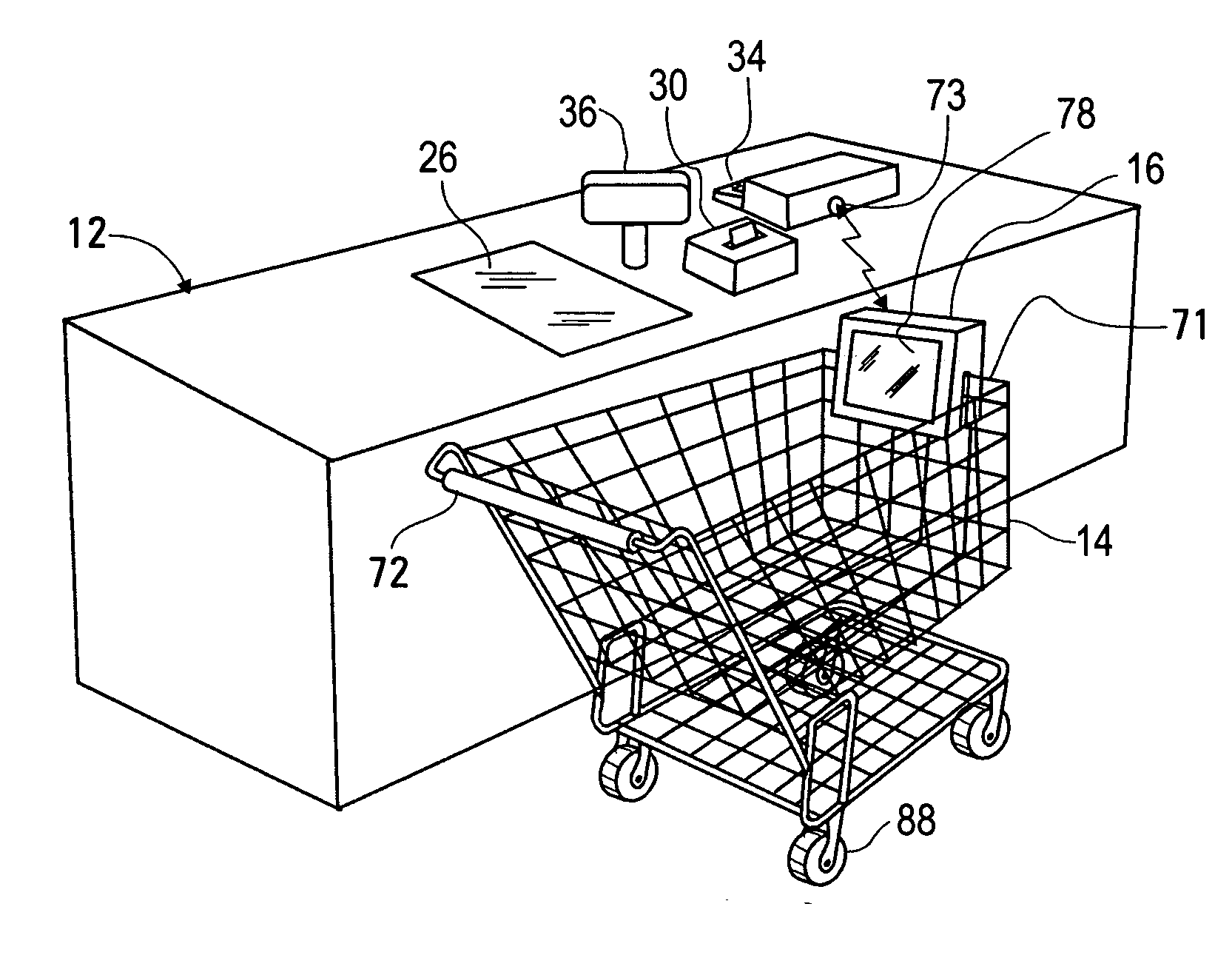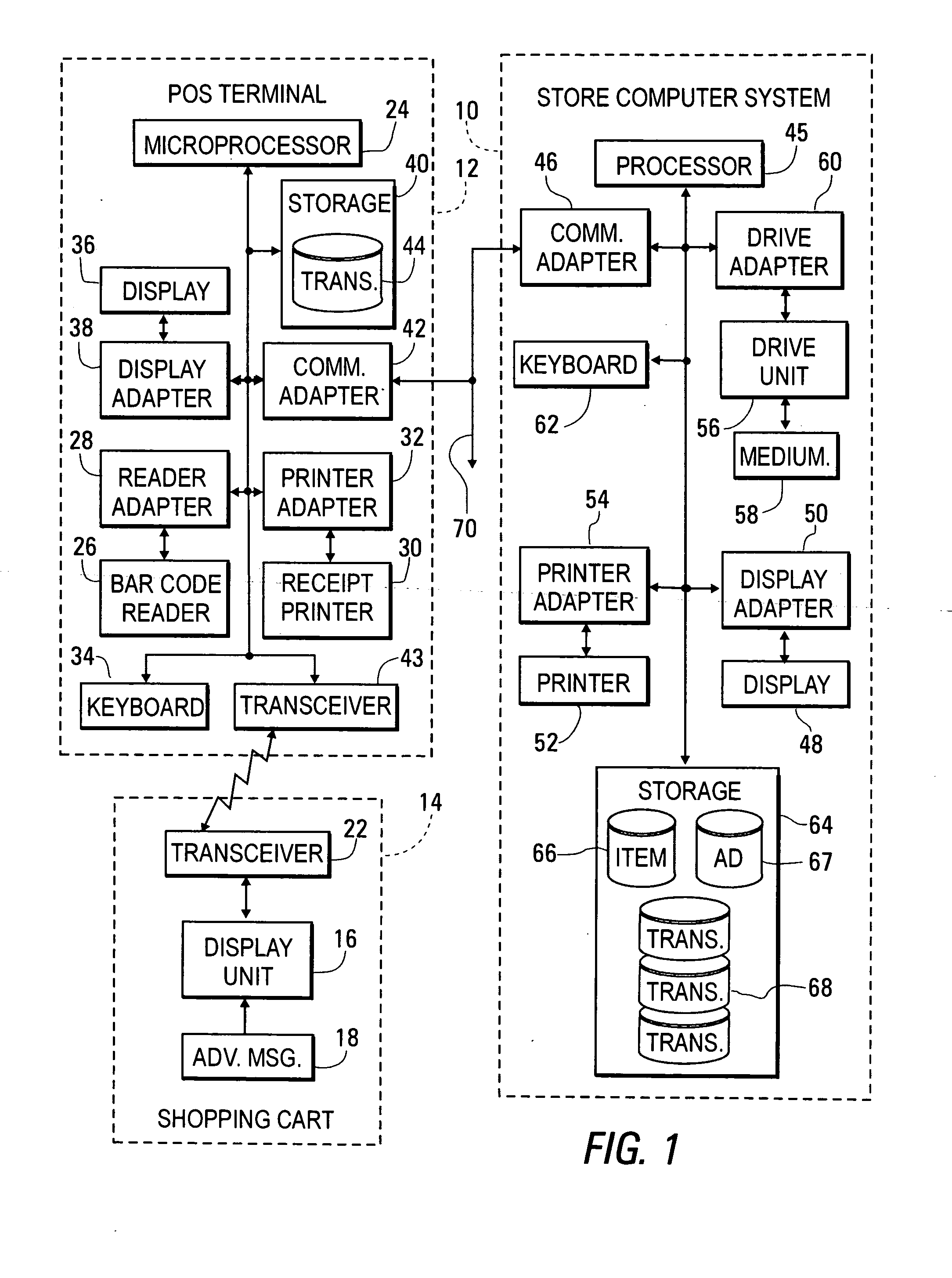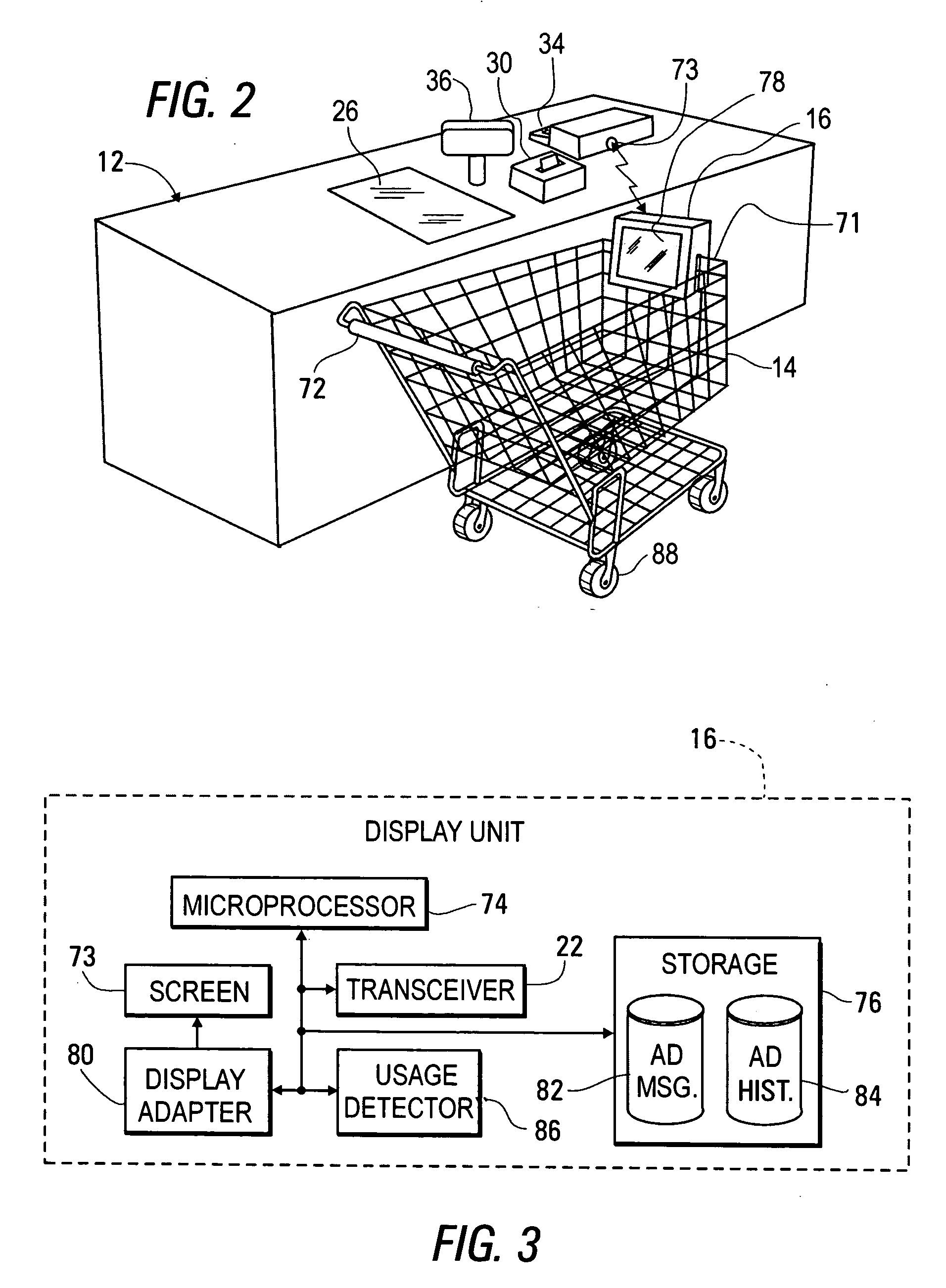Method and system for measuring effectiveness of shopping cart advertisements based on purchases of advertised items
a shopping cart and effectiveness technology, applied in the field of can solve the problems of ineffective use of mathematical tools applied in other types, lack of accurate methods for measuring the effectiveness of advertisements, and less effective methods instead being used, so as to stimulate sales and increase advertising expenditures
- Summary
- Abstract
- Description
- Claims
- Application Information
AI Technical Summary
Benefits of technology
Problems solved by technology
Method used
Image
Examples
first embodiment
[0052]FIG. 1 is a block a block diagram of a system built in accordance with the invention to include a store computer system 10, one or more point-of-sale terminals 12, and a number of shopping carts 14. The shopping cart 14 includes a display unit 16 for displaying one or more advertising messages 18 and a transceiver 20 for communicating with a transceiver 22 within the point-of-sale terminal 12 during the check out process.
[0053] The point-of-sale terminal 12 includes a microprocessor 24 and a number of conventional peripheral devices, such as a bar code reader 26 connected to the microprocessor 24 through an adapter 28 and a receipt printer 30 connected to the microprocessor 24 through a printer adapter 32, a keyboard 34 for data entry, and a display screen 36, connected to the microprocessor 24 through a display adapter 38. The point-of-sale terminal 12 also includes storage 40, storing data and program instructions for execution in the microprocessor 24, a communications adap...
second embodiment
[0083]FIG. 10 is a block diagram of a system operating in accordance with the invention; including a store computer system 220 and a shopping cart 222, which is understood to be representative of a number of similar carts within a retail store. The shopping cart 222 includes a barcode reader 223, which is used by the shopper to scan items as they are placed into the cart 222, saving time by eliminating a need to scan the items at a point-of-sale terminal. It is understood that the process of scanning an item in the barcode reader 223 means that the shopper has selected the item for purchase.
[0084] The shopping cart 222 additionally includes a microprocessor 224, to which the bar code reader 223 is connected through an adapter 228, a receipt printer 230 connected to the microprocessor 224 through a printer adapter 232, a keypad 234, which is used, for example, to enter barcode numbers that cannot be read by the barcode reader 263, and a display screen 236, connected to the microproce...
PUM
 Login to View More
Login to View More Abstract
Description
Claims
Application Information
 Login to View More
Login to View More - R&D
- Intellectual Property
- Life Sciences
- Materials
- Tech Scout
- Unparalleled Data Quality
- Higher Quality Content
- 60% Fewer Hallucinations
Browse by: Latest US Patents, China's latest patents, Technical Efficacy Thesaurus, Application Domain, Technology Topic, Popular Technical Reports.
© 2025 PatSnap. All rights reserved.Legal|Privacy policy|Modern Slavery Act Transparency Statement|Sitemap|About US| Contact US: help@patsnap.com



